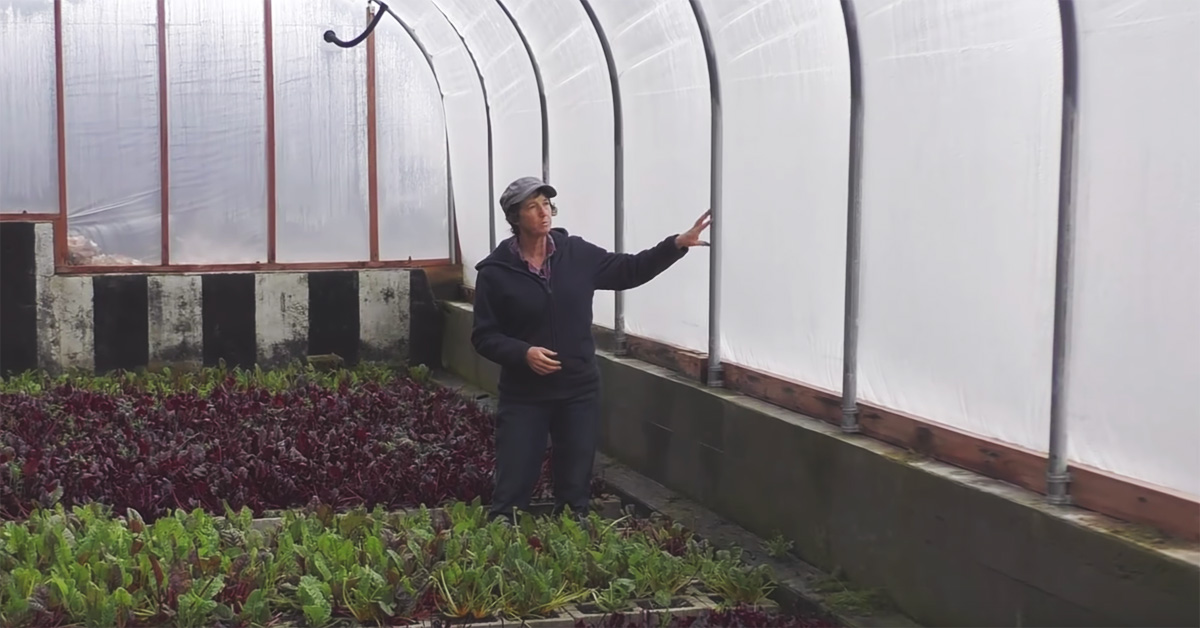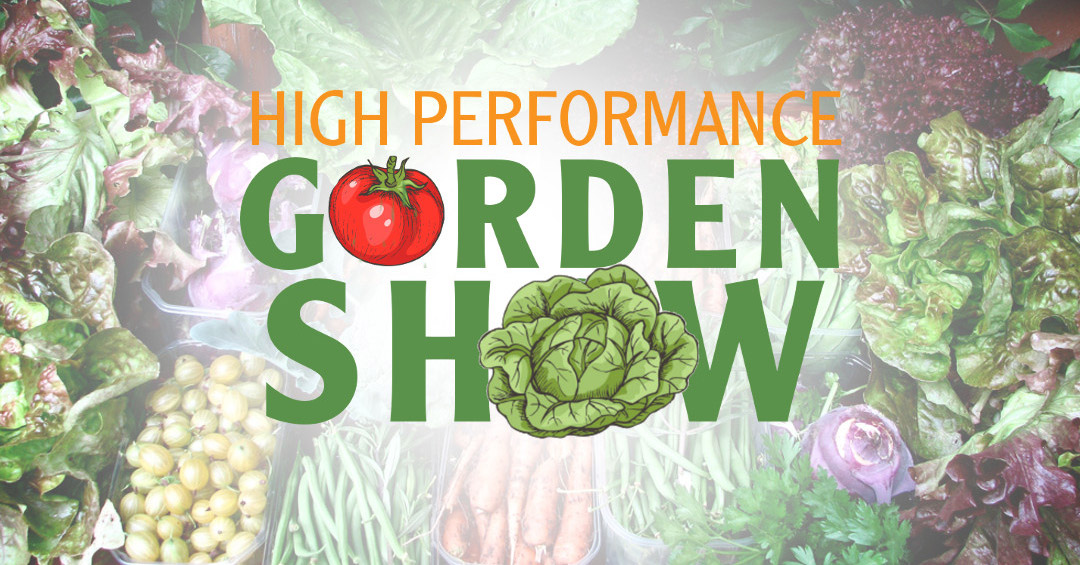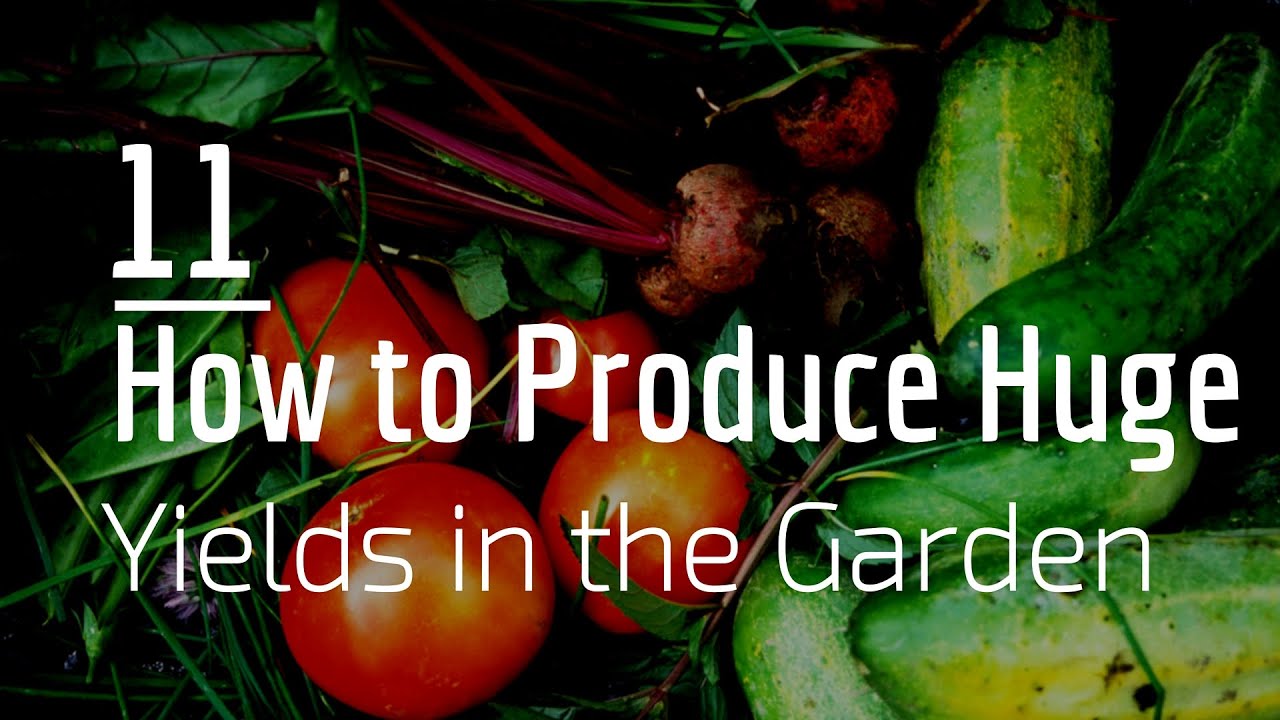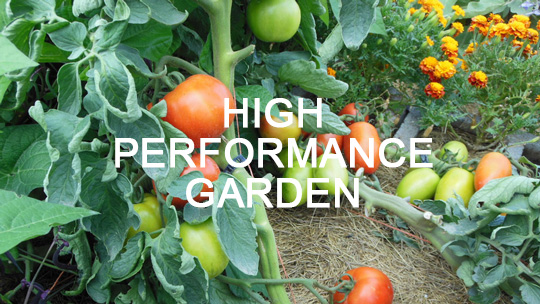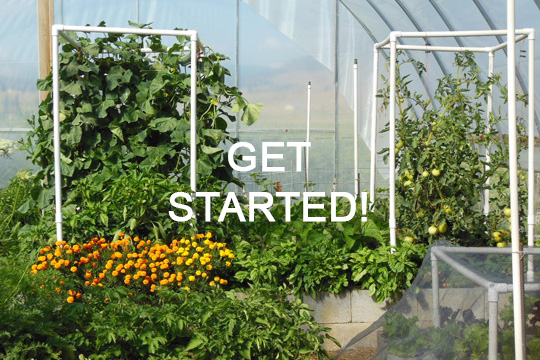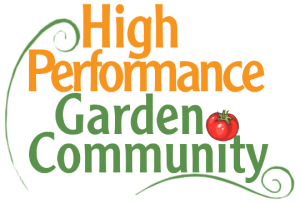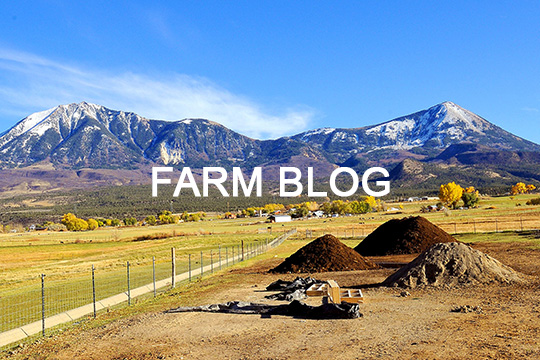
No matter where on this planet you live, if you want to plant a garden that is productive and completely organic you will need to plan your garden according to your region. Planning your garden according to the region you live in can be tricky. We teach gardeners from all over the globe and our mission is to make sure that they are well equipped for their growing seasons. In this High Performance Garden article we will learn how to find our personal growing zones whether we live in the northern or southern hemispheres and when to plant what. A high performance garden is well planned. When we know what our growing season has to offer us then we will be able to truly care for our plants despite the limitations the weather might bring us. A well planned garden is just one of the characteristics of a high performance garden system. This system will help you to produce a virtually weed free, easy, fun and productive organic garden.
To effectively plant your garden you will need to know when to plant what, how long your growing season is and what varieties you can grow. Before you can answer any of these questions you will need to know your plant hardiness zone.
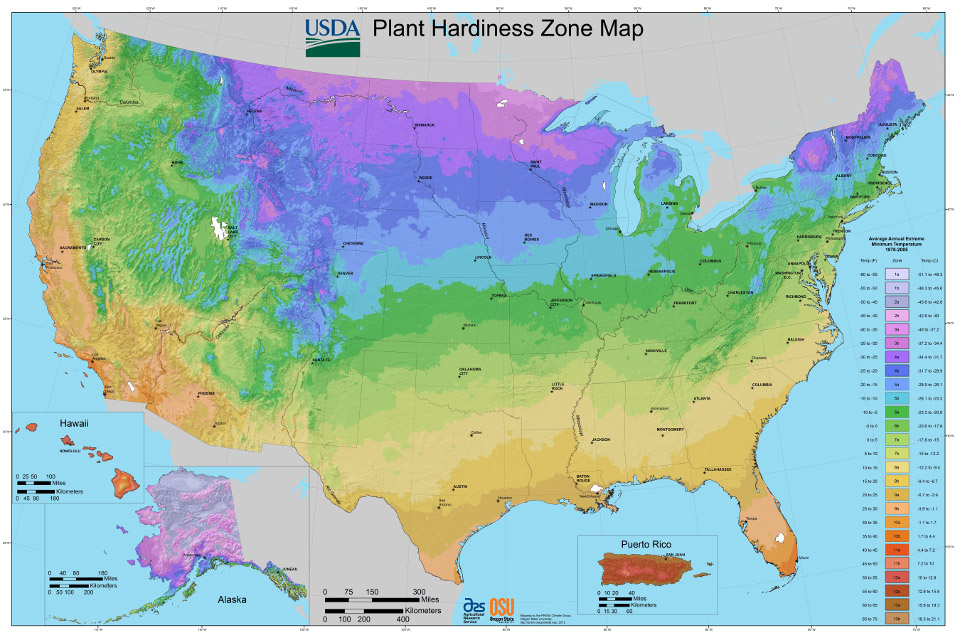
2012 USDA Plant Hardiness Zone Map USA
What is my Plant Hardiness Zone?
All of your gardening will be determined by daylength and temperatures. It is important to have an understanding of your average temperatures and weather patterns for your local area. Back in 1960’s, the US Department of Agriculture published a map of the United States that showed the different winter temperature zones. The United States has winter temperatures that range from the tropics to the arctic, dividing the country into 13 zones. The warmest being zone 13 that has no frost days. The coldest is zone 1 that can go to negative 60 degrees Fahrenheit. In 2012 the US Department of Agriculture updated their maps, showing the now warmer average winter temperatures across the US in the last 20 years. Other countries have followed suit and there are now maps for other countries around the world.
After some research I’ve found the maps for many of the countries. If you do not see your country in the list do a internet search on your country’s name plus the words “plant hardiness zone map”. This should direct you to a map of your hardiness zones. Otherwise you may need to take a guess at what your zone might be. If you need help in guessing send us an email and we will help you out.
What do you do once you know your plant hardiness zone? With your zone comes average last and first frost dates in your growing season. You can find your average first and last frost dates by searching your region on an internet search if you do not live in the United States.
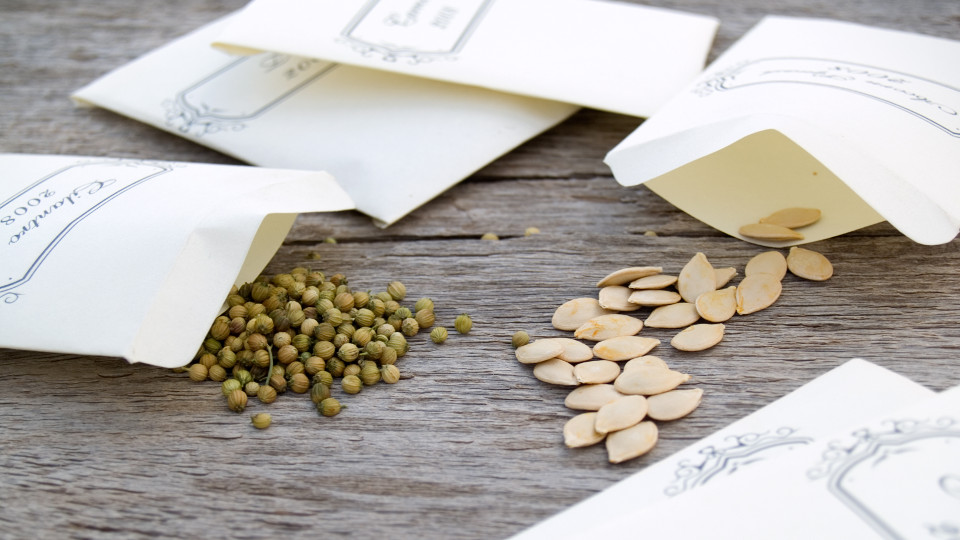
Knowing When and What to Plant
Knowing your last and first frost dates will equip you to estimate frost danger for your garden. Although this system is not perfect, it can be a great help for determining what types of plants you can grow. It will not help with what type of soil the plant will need or if the plant can take the heat in the summer.
When selecting your plants make sure that you use your zone number to determine your frost free days. To find your frost free days count the days between the first and last frost dates. For example; we have around 120 frost free days. If I am going to grow corn and the package says it takes 80 days to mature then I can grow the crop to maturity in my area that has 120 frost free days. If I pick a variety of corn that takes 150 days, I will most likely not get a harvest because the frost will take out my corn before it is mature.
If you keep track of your actual frost dates, you can build a chart for your house which will give you the best idea of your frost free dates and what you can plant.
To get a rough idea of when to grow cool or warm weather plants you can use the chart below. The C equals the cold weather plants and the W is the warm weather plants. If the chart has a C/W then you can grow both the warm weather and the cold weather plants at the same time in your zone. If you live in the southern hemisphere simply swap the northern hemisphere’s spring months for your spring months. For example, March, April and May will become September, October and November for those in the southern hemisphere.
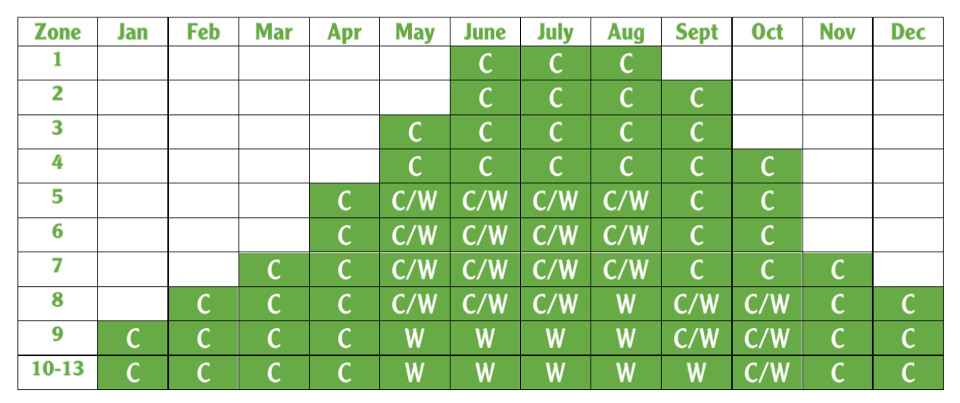
To get more information on which plants are cool weather or warm weather, read the article Know Your Planting Zone.
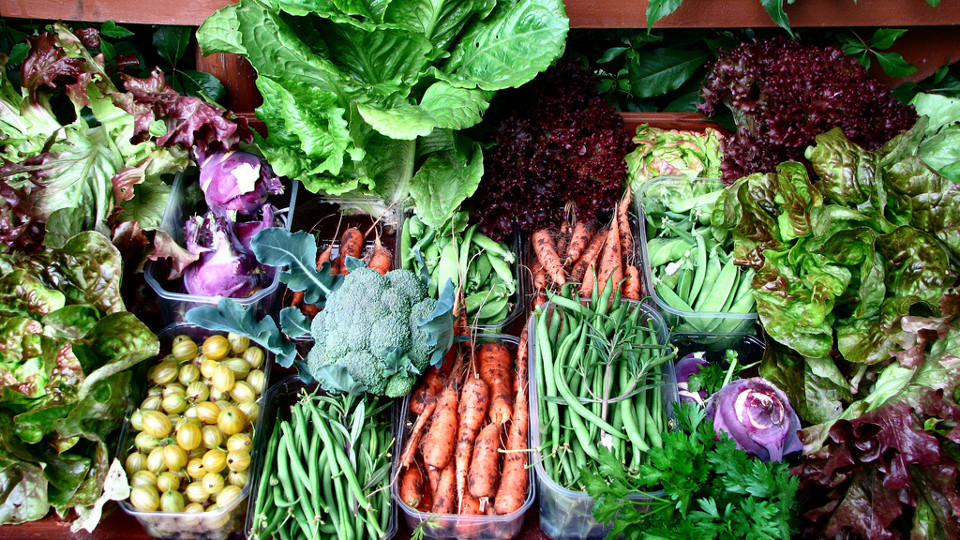 The Next Steps for Planning Your Garden
The Next Steps for Planning Your Garden
The fall and spring are the best times to plan your garden. Whether you are up against the clock with getting your plants in or cannot plant for the next three months, knowing when and what you can plant next year to have the best results is key. As you continue planning you will need to learn about how to protect your plants from frost so you can extend your growing season. In the Cool Season Garden Series we covered when and how to protect your garden from frost in high performance garden training videos. Another skill you will need is how to start your plants indoors. One of our past high performance garden series, the Secret of Seeds, will teach you the techniques you need to learn how to start your garden. Those training videos will help you as you plan your high performance garden for the coming growing season.
Now that you know when and what to plant in your region it’s time to begin your high performance garden. If you want to fully plan your garden by building up your soil, knowing exactly how much to plant for your family and to begin boosting your soil food web so that you can enjoy the most nutrient dense produce possible. You will want to read the eBook High Performance Gardening. If you are ready to create a high performance garden in one season with all the guidance and education you will need enroll in one of our High Performance Garden Courses, the Leafy Greens Container Garden Course or the comprehensive Abundance Garden Course.
I look forward to helping you develop your High Performance Garden this coming season! Until next time, may your garden be easy, fun, productive and always organic.
Lynn
Email me any questions you have about planning your high performance garden. A well planned garden is the beginning of a garden that produces all of the food you need in a short period of time!

